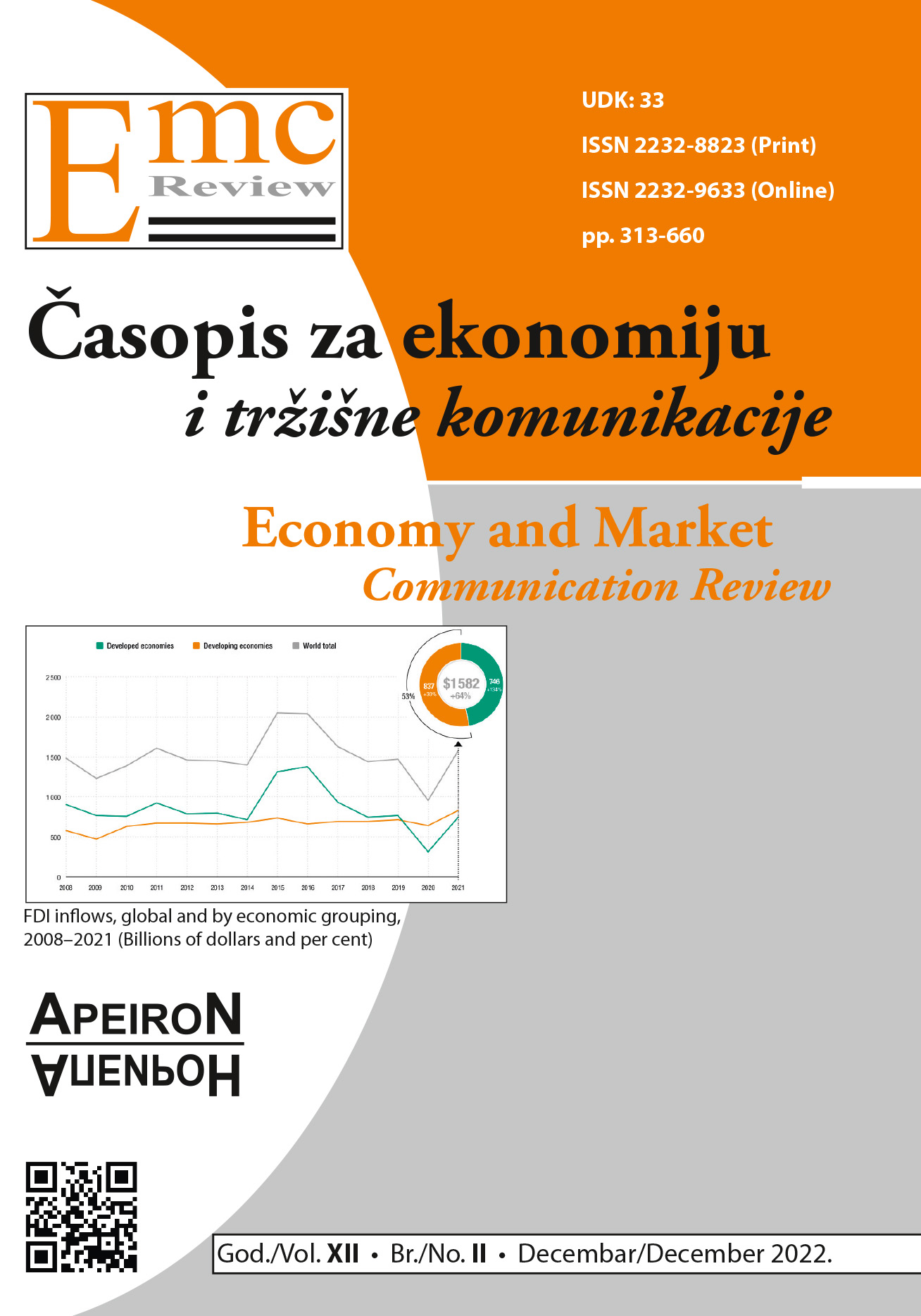RELATIONSHIP BETWEEN FOREIGN DIRECT INVESTMENTS, OPENNESS AND ECONOMIC GROWTH: EVIDENCE FROM DEVELOPING COUNTRIES
DOI:
https://doi.org/10.7251/EMC2202434KAbstract
The importance of free international movement of capital and openness to trade on the world market is very well known and elaborated in the relevant literature. Despite the fact that the most developed countries in the world are the carriers of international capital movements, especially through foreign direct investments, the inflow of foreign capital through foreign direct investments (FDI) is one of the key goals that developing countries set through their development strategies. In this way, developing countries strive to make their economies attractive for the presence of foreign capital in order to increase the level of production and raise the level of employment. What distinguishes developing countries is the high participation of foreign trade. Unlike large economies, which are said in the literature to be self-sufficient, small economies with insufficiently developed economies are nevertheless able to compete on the global market. The subject of research in this paper was to investigate the impact of FDI inflows on the economic growth of developing countries. The research covered 82 developing countries in the period from 1980 to 2020. In the paper, Fully Modified Ordinary Least Squares (FMOLS) and Dynamic Ordinary Least Squares (DOLS) methods were used to examine whether FDI viewed through the share of inflows in GDP and openness viewed through the share of total exchange in GDP increase GDP per capita in developing countries. The obtained results with a high level of statistical significance testify in support of the conclusion that FDI and openness to foreign trade increase GDP per capita in developing countries.
